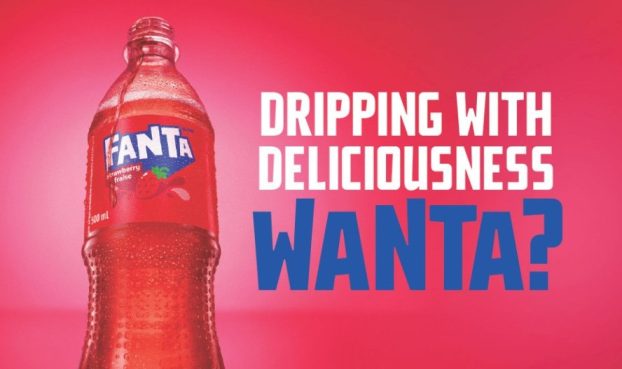‘There is no new thing under the sun,’ goes the line from Ecclesiastes. Maybe so. But that doesn’t mean old things can’t be improved upon.
That’s certainly the mantra of John Bradley, vice-president of marketing at Cadbury Trebor Allan, who has made it his business to rethink the company’s entire line of confectionery products.
In 1998, for example, at Bradley’s behest, the company reformulated its milk chocolate line – a move that affected brands such as Dairy Milk, Fruit & Nut, Hazelnut, Ivory Mountain and Amazon Brittle.
‘We took a step back and reinvented the whole thing,’ says Bradley, who added Trebor Allan to his portfolio when the company merged with Cadbury in January.
‘We changed the recipe, changed the packaging…changed the way the salesforce took it to stores.’
But rather than advertise the fact that it had changed its formula – Coca-Cola’s disastrous experiment with the New Coke was still fresh in the public’s mind – the Cadbury team decided to keep quiet about the change and let the product speak for itself.
The strategy seems to have worked.
The result, Bradley says, has been a 50% increase in sales over the last 18 months. And while that increase can’t be solely attributed to the new formula – the brands have been heavily advertised on television, in print and in-store – Bradley is confident it played a part.
Beginning this year, the company will revisit its other brands with an eye to repeating its milk chocolate success. Unconfirmed reports have the company’s popular Crispy Crunch as the next brand to go under the microscope.
Bradley, a British ex-pat who has been with Cadbury for more than 22 years, has worked for the Canadian operation since 1996. He took over as vice-president of marketing in 1997.
Today, he oversees a line that includes brands such as Crispy Crunch, Crunchie, Wunderbar, Fuzzy Peach, Cherry Blasters, Maynards Wine Gums and Gummies.
Strategy sat down with Bradley recently to discuss his unique approach brand management and find out where the company is headed following its merger with Trebor Allan.
Q: Why did you deem it necessary to go back and completely revisit your milk chocolate brands, particularly one as successful as Dairy Milk?
A: That is Cadbury’s biggest brand worldwide, but it wasn’t the biggest brand in Canada. And it wasn’t as big as it’s been in Canada. In the middle of the ’80s, it was twice as big. So, it’s been there before, why can’t we do it again?
Q: You redid the actual ingredients. Was that to make it more like the bar in the U.K?
A: No, actually it’s more different now. It was to ensure we had a clear taste preference against Hershey’s, which we didn’t necessarily have prior to 1997.
Q: What is the thinking behind revamping your brands. Why change winning combinations rather than concentrate on launching new lines?
A: I work in a market where Dairy Milk was launched in 1905. Hershey’s milk chocolate was launched in [1905]. And Aero was launched in 1930. There haven’t been any successful pure chocolate brands in Canada or anywhere else for 70 years. So is innovation likely to be the best way to go? Well, the answer would be yes, if none of these three companies had ever innovated and their current products were incrementally degraded to the point where they weren’t very good. But, that’s not the case. They’re three very successful companies, they’ve been doing marketing forever and people love their brands.
Q: You have brands like Twix come along, where they put a cookie in the chocolate bar. I guess you don’t consider that along the same lines as introducing an Aero bar?
A: We monitor the top 50 chocolate brands through ACNielsen. And there are probably eight ingredients across the board: chocolate, caramel, peanuts, wafers, cookies and, after that, you get into neat products like cherries, coconut. Unless we can come up with some revolutionary way of combining those ingredients, then it’s going to be difficult to get your [investment] back. When you put a cookie in instead of a wafer, is it going to make people drop brands that they’ve loved for 50 years? I don’t know. Maybe, maybe not.
Q: So what’s the answer, then?
A: Maybe the way forward is to reinvent the old brands, rather than [go to] the huge expense of trying to invent new ones, when the track record is appalling, anyway. The biggest thing we focus on is ‘Do we understand the difference between change and improve?’
Q: How has the market evolved?
A: There’s been more change in the sugar market than in chocolate. I was always impressed by the developments in sugar-free sugar. That’s a good idea. And then power mints, which recognized that mint candy was effectively being used as a breath freshener. So take away everything else and it still freshens your breath. Great idea. Then there is the development of sour candies, which Treborn does best by far. Great insight.
Q: What is your demographic?
A: Five to 95. Fragmentation of media has been a huge problem in our industry. We’re not into rifle-shot targeting, so even if you target a brand to the 17-year-old, you’re appealing to 10% of your actual buyers [and] you exclude the others. They may not buy into the message.
Q: Who buys the majority of chocolate?
A: Teenagers eat three times as much, but there are a lot more adults than there are teenagers, so by volume consumed, it is 29 to 44. And teens are a difficult market, because they aren’t very brand loyal, so you can get sucked into a value message, which doesn’t usually make money.
Q: I hear you’re planning a renewal push for Crispy Crunch?
A: Historically, we’ve done a lot of marketing for Crispy Crunch. We had a promotion last year with a holographic label and a Vince Carter tie-in. It’s not a case of ‘It’s this brand’s turn next year.’ If we don’t have an insight, it doesn’t get a turn. If we’re not improving, it won’t get a turn. If we do improve Crispy Crunch, then it will get a push. Last year, was a little push. Just to keep the brand top-of-mind.
Q: What do you bring to the position of VP, marketing?
A: One is to debunk the marketing myths. Textbook marketing has done a great job of taking virtually every consumer’s love for all kinds of products and making it less interesting. That is why I spend a lot of time around the factory. We have 30,000 kids come to the factory and I can’t imagine that they would want to go to a cat food factory, or Andersen Consulting or a Tide factory.
Q: Well, there aren’t many types of businesses that you can make children’s books and movies around such as Willy Wonka.
A: We start with this huge advantage – people love our products. Our job is to magnify that in the store. This is a fun category, so we make chocolate frogs, gummi tarantulas, and stuff like that. If we’re not having fun doing it, what chance has the retailer and consumer got?
Q: Are there plans to introduce U.K. brands to the Canadian market – those that are popular there but unavailable here?
A: We’ll never say never, but that’s not driving our strategy. For us, the converse is true. Most of the brands we sell in Canada don’t sell in the rest of the world for Cadbury. Crispy Crunch, Wonderbar, Caramilk only sell in Canada. We can make Caramilk suit the Canadian consumer perfectly. It’s a bit of a harder job to make Kit-Kat fit the Canadian consumer perfectly because it’s a global brand. There are rules.
Q: What makes the Canadian market so different?
A: It’s not a high consumption market for chocolate in Canada. The competition here is tougher for the impulse-snack dollar. The drive-through doughnut stores are competing for the snack-food dollar. That sort of stuff doesn’t exist in many other markets.
Q: What are the differences between the U.K. and Canada in terms of marketing Cadbury product?
A: When we go to the Cadbury-Schweppes global conferences and show our work, our work would not be seen as being at the extreme end. But I happen to think the U.K. advertising environment is disappearing up its own wazzoo.
Q: Why, because it’s too edgy?
A: I think they’re getting into being clever just for the sake of it rather than employing the right degree of clevereness to achieve the best results. I don’t get paid for making edgy ads.























